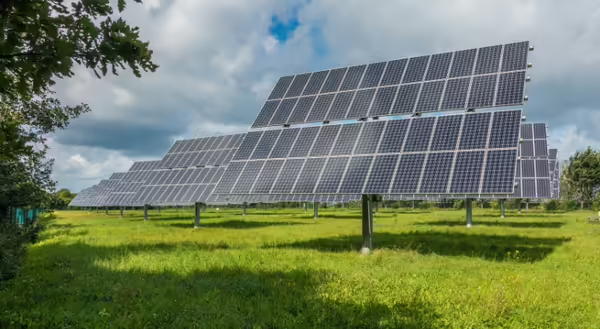
July is the perfect summer month. As a kid it was a month with no schoolwork, my favorite summer camp, and many days spent outside in the sun. From playing in the backyard and visiting parks with friends, to days at the community pool, one of my favorite feelings was coming home and still being warm from the sunshine. As we grow up, we begin to comprehend the significant role the sun plays in our daily lives. Not only does it provide light and warmth, but it also helps plants make food through photosynthesis and aids water evaporation for the water cycle. Now, as adults, we are witnessing a rise in solar panels throughout the state and how they harness energy from the sun.
There is much discussion on the pros and cons of photovoltaic (PV) solar panels. Supporters of solar energy see a strong need for clean energy, especially with the growing population and increasing energy demands in highly industrialized countries. Depending on non-renewable energy sources such as oil or coal is not sustainable for the long-term future as those resources can be exhausted. Solar energy is also praised for its cleanliness compared to non-renewables. From an environmentalist perspective, solar energy does not produce harmful greenhouse gases, pollution, smoke, or clouds that would lead to reduced air quality. Additionally, solar energy does not produce carbon emissions, which would contribute to climate change.
One common concern about solar energy is solar farms take land away from agricultural pursuits and products. Illinois is known as the Prairie State, and with any form of development it is important to consider the impact on our soil and natural areas. While researchers strive to adapt solar farms to be intertwined with livestock or crops, most solar farms are solely for solar panels. These concerns raise important questions and highlight areas for growth as Illinois has over 25 million acres of farmland, but it may be surprising to learn only 1-2% of existing farmland would be required for solar in most states. If the United States were to use solar for 45% of the electric grid only 0.6% of existing land would be required. It is also worth noting that production is not permanently stopped when solar energy is implemented. Once the lease on the solar project is complete, many of the materials from solar panels can be recycled, and the land can be used for planting again. Farmers may choose to install solar panels to diversify their income, allow the ground to rest, or for other personal reasons.
Secondly, landowners may be cautious of solar panels affecting their property value. Research conducted nationwide has shown that solar projects do not decrease property values. More specifically, a study conducted in the state of Illinois showed results that the value of properties within one mile increased by an average of 2% after the installation of a solar farm. Lastly, solar farms raise community concern about fire risk, so it is essential to have them approved and installed by a qualified provider, like other electrical systems. Any risk of fires may be caused by defective components or design flaws, but rest assured fires caused from PV systems are exceedingly rare.
While solar technology itself is not new, harvesting the sun's energy through PV cells in solar panels is a growing industry with room for further research and development. Continuing to learn about clean energy sources can pave the way for a cleaner future.
To read about ongoing research integrating solar farms and agricultural pursuits visit https://scapes.illinois.edu/
To learn more about solar energy for your household, visit https://extension.illinois.edu/energy/solar-energy